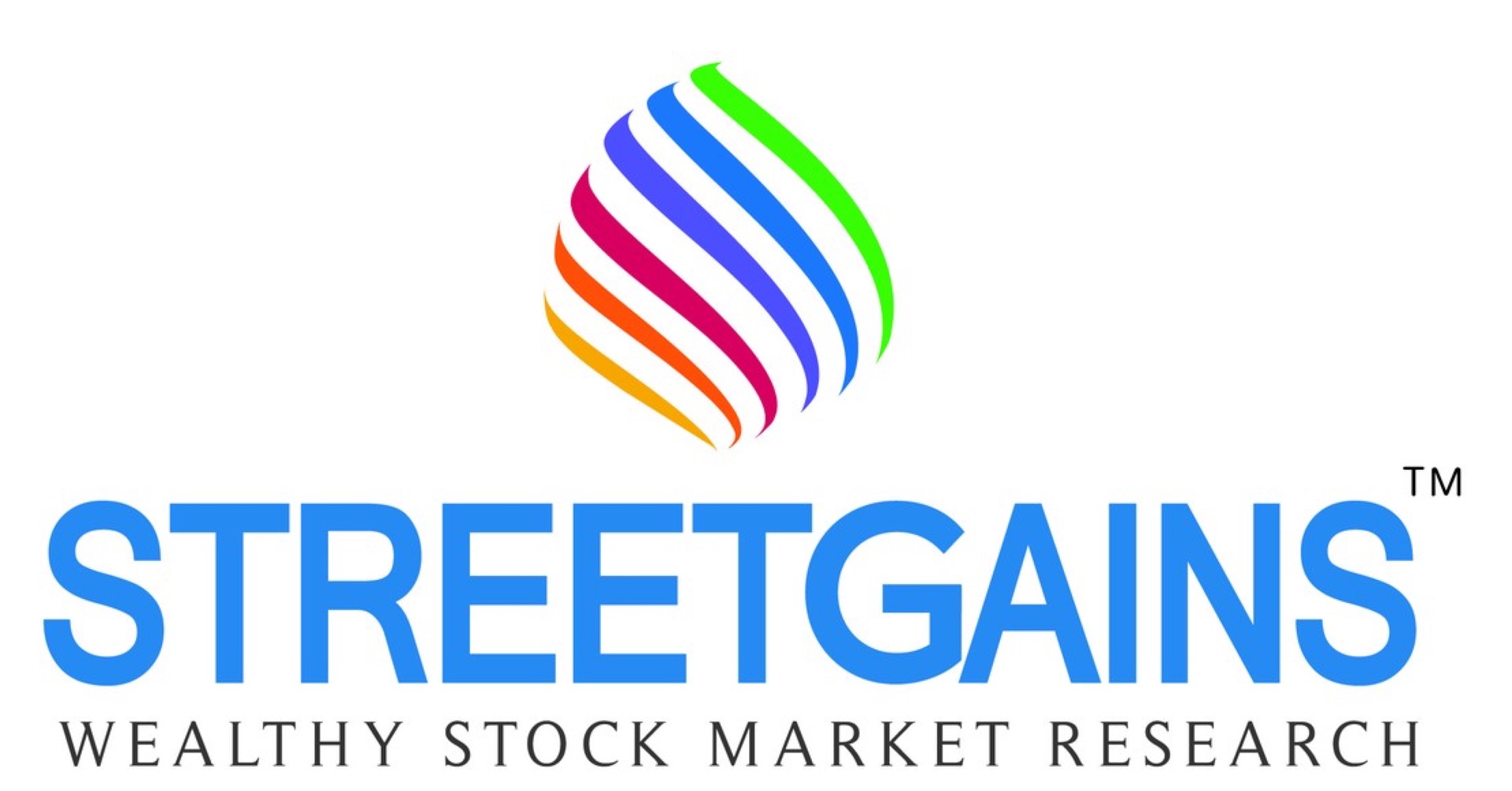Impact of Covid-19 on Trucking and Logistics Sector – Part 1
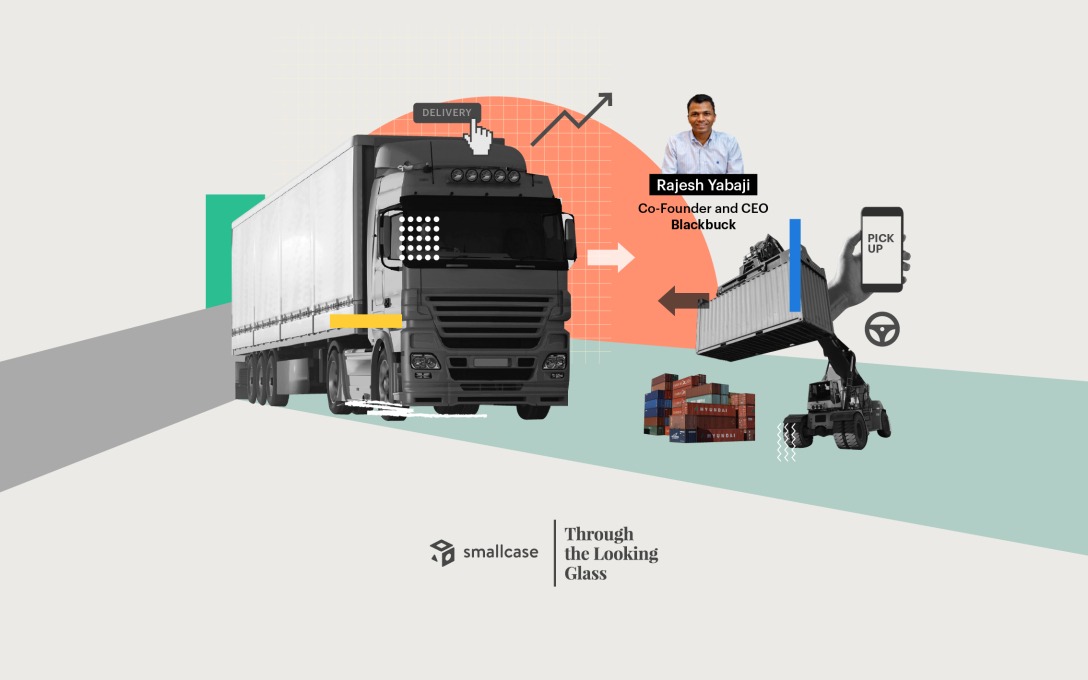
Snapshot of Trucking and Logistics pre-Covid
According to the Logistics Skill Council – a non-profit organization set up by the Ministry of Skill Development and Entrepreneurship – logistics is a $150 billion industry where 99% of the market is unorganized (such as owners of less than 5 trucks, affiliated to a broker or a transport company, small warehouse operators, customs brokers, freight forwarders etc). Hence, the sector has seen a very slow uptake in technology adoption.
The emergence of e-commerce in India has changed the face of the logistics industry in the country. The implementation of GST has streamlined the state-wise tax structure ensuring the seamless movement of goods across the nation. The government has recognized the need to promote growth in the sector, launching projects focused on infrastructure development – Sagarmala and Bharatmala.
The government initiated ‘Make in India’ program is a significant leap towards making India the manufacturing hub of the world. Add to that, the enforced paralysis due to Covid-19 has resulted in a lot of backlash against China – the current manufacturing hub for many countries. These events have given India an opportunity to make its mark on a global level and the need for that is unprecedented.
COVID-19 Impact on Logistics Sector
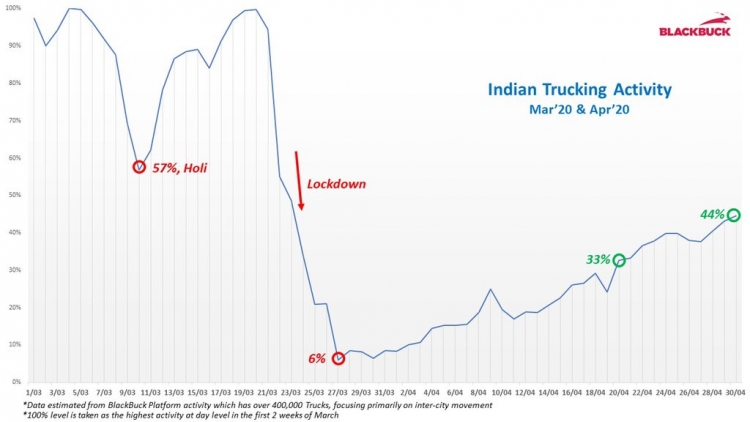
Source: Blackbuck
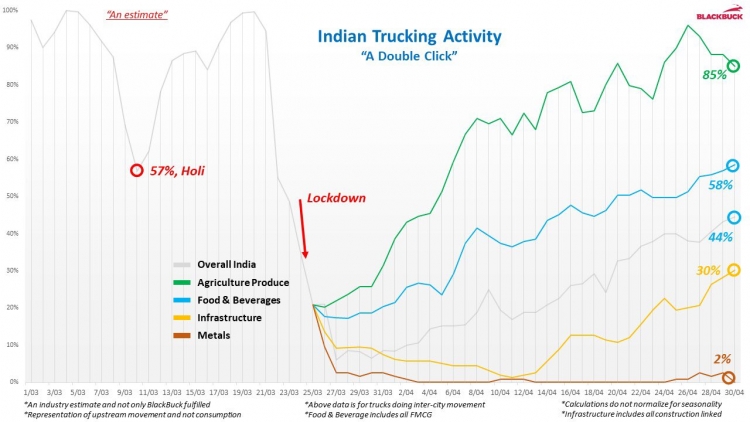
Trucking – The Road Ahead
The impact of COVID-19 on logistics sector has brought with it a number of challenges.
From a stakeholder’s lens, lack of health security and protection for drivers is a major concern and this causes drivers to refuse trips. Along with that, small transporters and fleet owners face cash flow issues as large parts of the economy were on a standstill.
On the supply-side, challenges such as labour shortage, distributed supply base, volatile oil prices, poor infrastructure to access demand, and uncertainty around regulations with respect to the movement of goods are leading to disparate freight prices and creating an imbalance between demand and supply.
The Need of the Hour
The government has been very proactive in trying to control the outbreak of COVID-19 until now. The tapering growth rate of COVID-19 and removal of restrictions over time in a phased manner will significantly contribute to the recovery process of the logistics sector.
But, there is a slew of other measures that need to be taken so that the logistics/trucking industry gets back to normal.
- We need to resume the manufacturing of goods – this is needed to re-establish the mismatch balance between supply and demand. This mismatch will also be addressed by providing wider access to trucks and loads
- There is a need for financial relief to truck owners, transporters, distributors, farmers, and the agent community to help them recover from the loss of business due to the lockdown
- At the forefront of these is a need to ensure health security to the blue-collar workforce including truck drivers. They should resume working in a way that is safe such that they aren’t exposed to the dangers of COVID-19
Light At The End Of The Tunnel?
While the future remains largely uncertain, we could hope to see a modest recovery in the trucking sector. It took 33 days from the announcement of lockdown for China’s trucking industry to recover to 44% of pre-COVID levels. India took 35 days for the same. The industry in China recovered close to 70% by the 46th day, and we have seen a recovery in India’s trucking industry to be along the same lines as that of China.
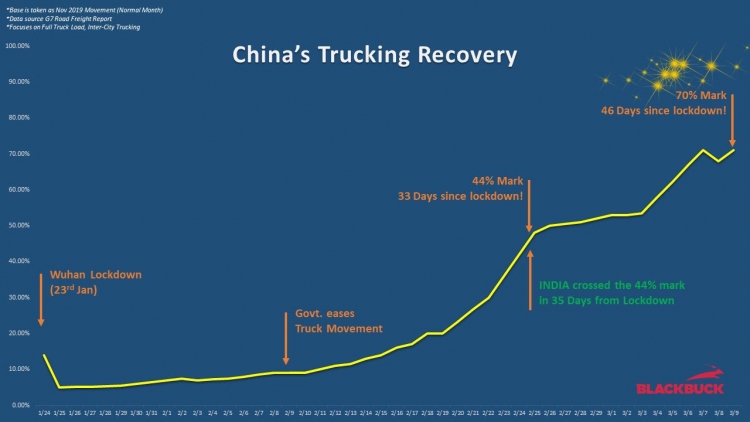
- All stakeholders are looking for a larger pool of carriers and shippers today due to the disruption in their already fragmented ecosystem. This is pushing people to adopt digital discovery platforms to look for relevant demand and supply channels.
- The demand-supply patterns have reset the pricing benchmarks – people prefer to have data-backed insights to price their freight.
- The documentation and payments in this industry are heavily dependent on manual intervention – to the extent of needing hard copy documents to receive payments. We are seeing many of the shippers moving to e-documentation and digital payment methods. This has accentuated even more now, because of social distancing norms related to avoiding human contact.


























